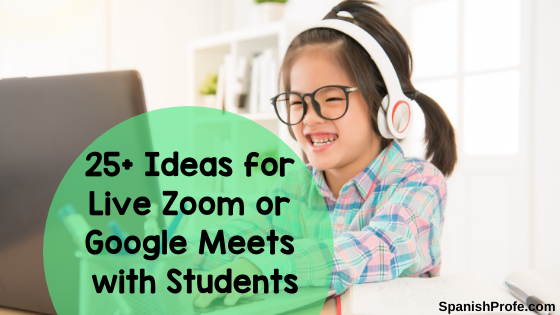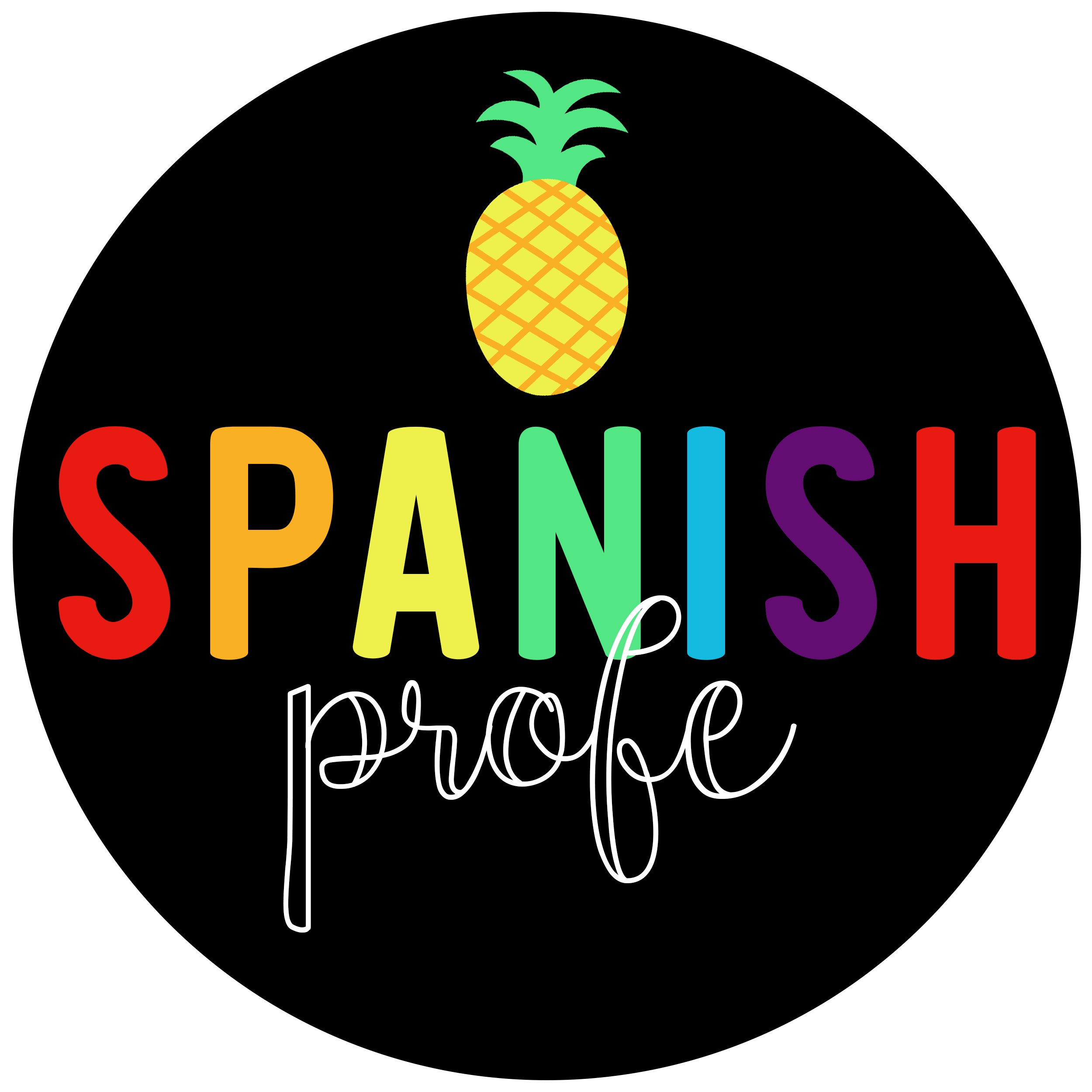Looking for ideas to do during a live Zoom or Google Meet sessions with your K-2 Bilingual students. Yes!! Teachers and kids get bored if you keep doing the same thing on live Zoom or Google meet “classes” or “meetings”… so, we went searching for ideas to share with you.
We have compiled of list of 25+ ideas that you can do during live sessions with your primary (K-2) bilingual students.
As a teacher, you will have to make it grade or age-appropriate but these are great ideas for most classroom teachers to use during distance learning or e-learning meetings with their students.
1. Directed drawing: Tell students to have a paper and pencils, markers or crayons ready. Do a directed drawing or watch one together.
2. Show and tell/Share and tell: Just as you would in your class, have a couple of students share or show something.
3. Sharing (Share your favorite toy, pet, stuffed animal, etc.): If your class if learning about 3D shapes or plants, have them come prepared to the class (or meeting) with something (real, drawing or picture) of that item.
4. Read a story or a “guest” reader: You could do a read aloud to the class, a parent or try to involve a specialist teacher, assistant or even administrator the chance to “interact” with kids.
5. Scavenger hunt (colors, shapes, Things that start with the letter…, etc.): Depending on the age you might want to tell parents what students will be looking for beforehand or at least that they are doing a “scavenger hunt” so they know their child might be up and looking around for things.
6. Dance Party or GoNoodle: Do a little dancing or exercising together is always fun.
7. Tell a Joke/Comedy Show: Either the teacher could come prepared with some jokes or you could have students come with “school appropriate” or “kid-friendly” jokes to share.
8. Virtual field trip: Check into some of the many zoos, parks, museums, etc. that provide virtual field trips. Do one with the class once you have found one that is “appropriate” or something related to your units of study.
9. Sing a song: Did you have a morning meeting song, or something you always sing as a class? Why not do it together on Zoom or Google meet. Or try singing popular children’s songs that most students might know.
10. Question of the day: Like you might have in real life have a question of the day. Do you have an M in your last name? Do you like to eat broccoli? What is your favorite season? What did you eat for breakfast? Do you prefer cats or dogs?
11. Science experiment: You could prepare materials for a science experiment. The students could make predictions to what would happen before doing the activity. They could watch you do it OR if it is something they could do with materials they have on hand maybe students could do it as well and share their results.
12. Simon says…: Game to practice listening, colors, body parts, actions, etc.
13. Academic Sharing: Students could share work they are proud of (journals, science, art, etc,) and you as the teacher could do weekly shout outs or “student’s of the week” to students who were most improved, finished everything, creative, etc.
14. Dress up day (and then describe what they are wearing)– favorite book character, the color blue, pajamas, etc.
15. Would you rather game: Play the game and have students raise hands and share they response. Would you rather eat fish or pizza? Would you rather swim or ski? Would you rather read or do math?
16. Find the missing object: Show a variety of objects on screen/screenshare and then take something away. Students raise hands to share what is missing. It could be a missing person from the class as well (Turn off their camera).
17. Make up a story together with phonics focus or spelling list.: If your class is working on words with the letter ‘p’. Brainstorm a list. Write it on paper or bored and then try making up a silly story using all the words the class came up with.
18. “Fort-night” or “Fort-Friday”— kids make forts at their house and share/hang out together. Just a way to hang out and practice construction/engineering skills.
19. Mystery Bag: Put something in a bag. Have kids raise their hands and ask questions (yes/no) to see if they can guess what it is.
20. Guest visitor/speaker: Could you have someone from school, the community, a students family member, etc. and be a guest visitor during the live class. If you are learning about community workers; maybe you have a parent that is a fire fighter or a doctor that could come on.
21. Charades: You or students could act something (like being an elephant, riding a bike, eating soup, etc.) and students could raise hands and guess. To organize you might want to make a list and tell the “actor” to choose one in their head without saying it out loud.
22. Pictionary: If you have paper or digital drawing capabilities, you or a student could draw something and kids could guess what it is.
23. How to Writing/Giving directions: If working on how-to writing or giving directions this is a great idea. You could do it live… Like “how to make a Peanut butter and jelly sandwich” following your student’s directions. Or could do a step by step (or how to process) modeling to them live and then the students could make their own videos (or written processes) to share with the group.
24. 20 questions: You could think of a person, animal, food, etc. in your head and have students raise hand and ask questions (yes/no). Great language activity. If they guess what/who it is in less than 20 questions the class gets a point if not you get a point.
25. Boggle: If you have access to the actual game you could shake it and display it on the screen or make your own with post-it notes or just boxes on-screen or
26. Mad Libs: You could find a premade one or make up your own. This would work great in 1st or 2nd grade when you are learning about verbs, nouns, adverbs, etc. as a grammar portion of your bilingual curriculum.
27. Talent Show: Could you have students prepare to share a talent– sing a song, play an instrument, magic trick, art project, etc.
28. Rock, Paper, Scissors: Start teacher vs. 1 student. Have the winner chose who they play against.
If you have any other great ideas… leave a comment and we will add them to the list.
For less than $1/day you can access ALL of our 600+ resources in Spanish for bilingual K-2 teachers. Learn more here.











